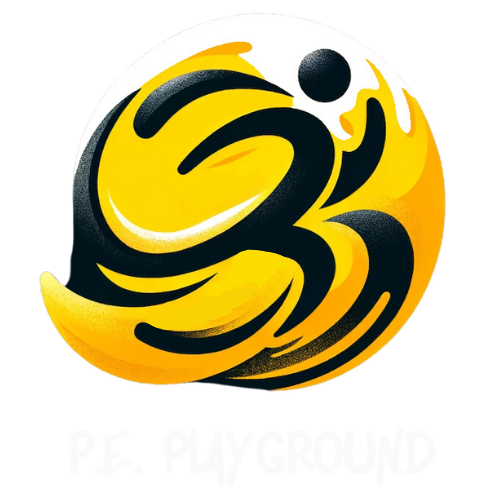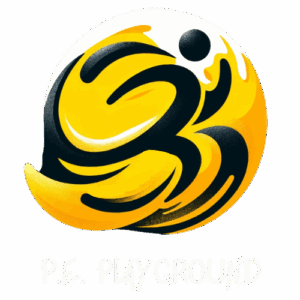MyPlate in Physical Education Class: Enhancing Children’s Nutritional Awareness
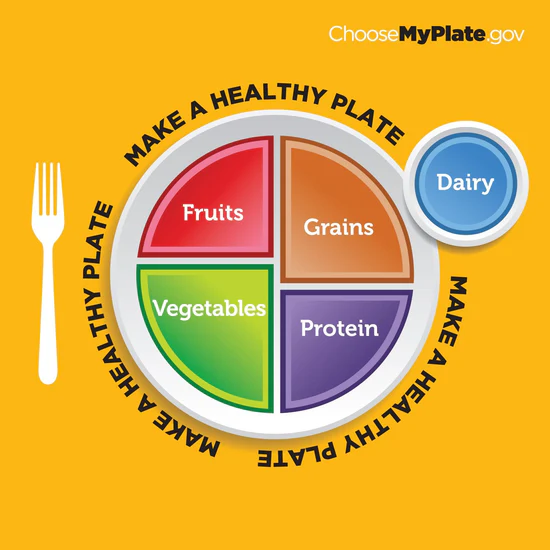
What is MyPlate?
MyPlate is a modern healthy eating guide developed by the United States Department of Agriculture (USDA). It was introduced in 2011 as the new symbol of balanced nutrition, replacing the long-standing Food Pyramid.
MyPlate provides a simple yet effective visual: a plate divided into sections, which helps people of all ages easily understand the major food groups and the proper proportions of each in a meal.
The MyPlate graphic depicts a plate split into five color-coded sections, each representing a different food group. Specifically, fruits (red) and vegetables (green) together fill about half of the plate, while grains (orange) and protein foods (purple) share the other half. A smaller blue circle on the side represents the dairy group (such as a serving of milk or yogurt). This straightforward image serves as a daily reminder of what a balanced meal looks like, emphasizing variety and proper portions in our diet.
Key Messages of MyPlate
MyPlate comes with a set of simple nutrition guidelines. Some of its key messages include:
Fill half your plate with fruits and vegetables at each meal myplate.gov.
Vary your veggies and focus on whole fruits: choose vegetables of different colors and opt for whole fruits instead of just juices.
Choose whole grains: Make at least half your grains whole grains.
Choose lean proteins and vary your protein routine: include poultry, fish, beans, and other protein sources with low fat.
Low-fat dairy: consume low-fat or fat-free milk, yogurt, and cheese(or fortified alternatives like almond milk).
Small changes add up: remember that little daily improvements can make a big difference – start with simple steps toward healthier eating.
Why is it Important for Children to Learn About MyPlate?
Childhood is the ideal time to instill healthy habits that can last a lifetime. By learning about MyPlate, students gain an understanding of which foods are beneficial and in what proportions, building early nutritional awareness. This is especially crucial today, as many children face issues like poor eating habits and rising rates of childhood obesity. MyPlate helps kids visualize what a balanced diet looks like and guides them toward better food choices that support their growth and development.
Moreover, incorporating nutrition education into physical education highlights the connection between proper diet and physical activity. Students learn that food is the “fuel” for their bodies: eating well gives them the energy to play, exercise, and even concentrate better in class. In fact, the MyPlate guidelines themselves emphasize the importance of staying active, recommending that children get at least 60 minutes of physical activity each day.
When students see their PE teacher valuing nutrition as part of fitness, it reinforces the message that health is a combination of being active and eating right.
Integrating MyPlate into Physical Education
You can incorporate MyPlate concepts into your PE classes without sacrificing active play time. For example, one strategy is to begin class with a quick, nutrition-themed warm-up game lasting about 3 minutes, followed by a brief one-minute discussion to reinforce the lesson. In just 5 minutes, you can deliver a healthy eating message without disrupting the flow of your lesson.
Also consider adapting classic games (tag, relays, ball games) to include MyPlate themes. By doing so, students remain physically active while also exercising their minds on nutrition topics. Even a few minutes of nutrition-focused activity in each session can, over time, cultivate greater awareness among students. You might, for instance, display a MyPlate poster in the gym as a constant visual reminder. The key is to integrate nutrition as a fun part of physical activity, so it doesn’t feel like a separate chore but rather an engaging extension of play.
Educational Benefits
Improved nutritional awareness: Students gain knowledge about food groups and understand the importance of balance, which can lead to healthier choices both at school and at home.
Connecting theory to practice: Through movement and play, children experience concepts like “food as fuel” firsthand and see how nutrition affects their bodies in action.
Higher engagement and retention: Interactive nutrition games make learning fun. Students participate actively and are more likely to remember what they learn, compared to passive classroom instruction.
Holistic health understanding: Incorporating nutrition into PE promotes a more comprehensive approach to health education. Children learn that being healthy isn’t about exercise or diet alone, but about both working together in harmony.
Practical Activity Ideas
Food Group Relay: This high-energy team game is perfect for the playground. Divide students into teams. At one end of the yard, scatter picture cards of various foods. Each team, one runner at a time, races to grab a food card and then place it into the correct category on a large MyPlate poster or into hula hoops labeled with each food group. The first team to correctly sort all their food cards wins. This relay gets kids moving and thinking about food groups simultaneously.
“MyPlate Corners” Game: Label each corner of the gym or classroom with a food group name (fruits, vegetables, grains, protein – you can designate a spot for dairy in the center). The teacher calls out a food item (e.g., “apple” or “cheese”), and students must quickly run to the corner representing that food’s group. This can be played indoors or outdoors and keeps children active while they practice categorizing foods.
Healthy Freeze Tag: Play a modified game of freeze tag with a nutritional twist. One student is “It” and tries to tag others. If tagged, a student freezes in place. To get unfrozen, a classmate must tag the frozen person and quickly name a healthy food from a specific category (e.g., a vegetable or a fruit that hasn’t been mentioned yet). Kids are not only running and dodging but also recalling healthy foods to free their peers – making this game both active and educational.
In addition to these games, consider using a short educational MyPlate video as a teaching tool. For instance, the “5 Food Groups” video on YouTube presents the food group concept in a fun, kid-friendly way. You can show this video at the start of a lesson to spark interest or at the end as a recap – students will enjoy the colorful animation and it will reinforce what they’ve learned.
Final Thoughts
As physical education teachers, you have a unique opportunity to influence children’s lifelong habits. By incorporating MyPlate into your curriculum, you help students build a foundation of healthy eating alongside physical activity. Try out some of the ideas above and watch your students light up as they learn about nutrition through play. It’s time to add a serving of healthy eating to our lesson plans – MyPlate is ready to be served in your next class!
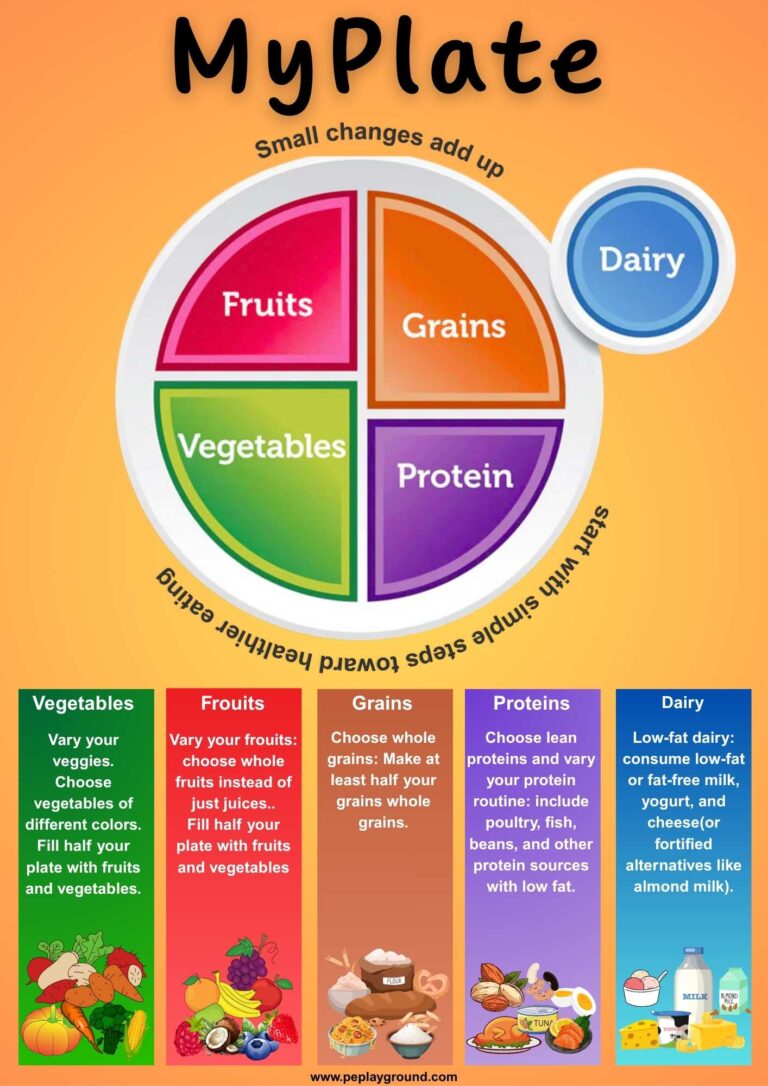
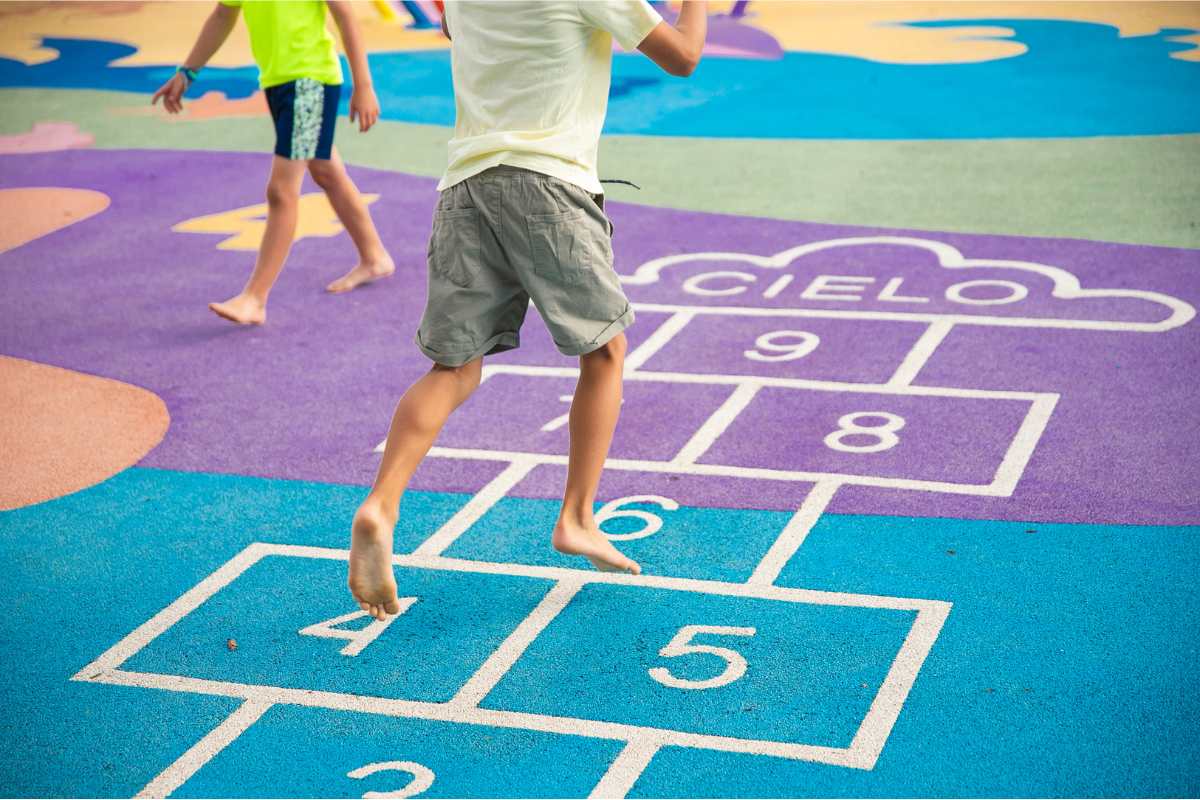
Join Our P.E. Community
Become part of a growing network of teachers who believe that movement is a powerful tool for learning. By joining our community, you’ll receive updates on new blog posts, free resources, and exclusive content — all designed to make your teaching more fun, inclusive, and effective.
Our Newsletter
Want fresh ideas, posters, games, and free P.E. resources delivered to your inbox?
Subscribe to our newsletter and be the first to know about new posts, exclusive content, and creative teaching ideas!
Because physical education should feel like play!
